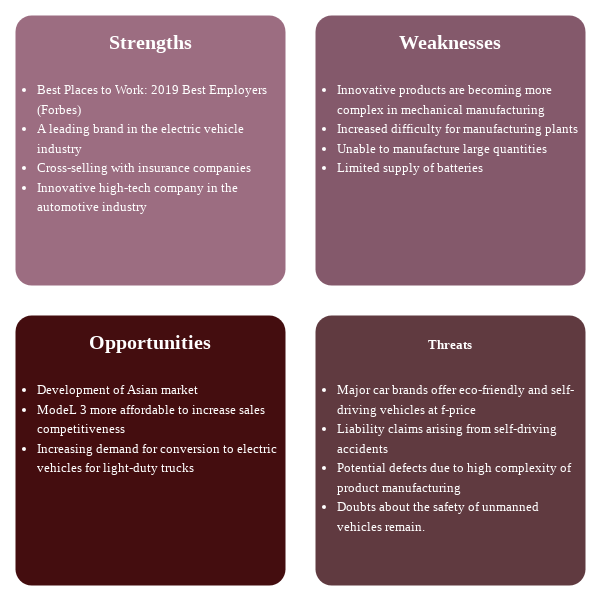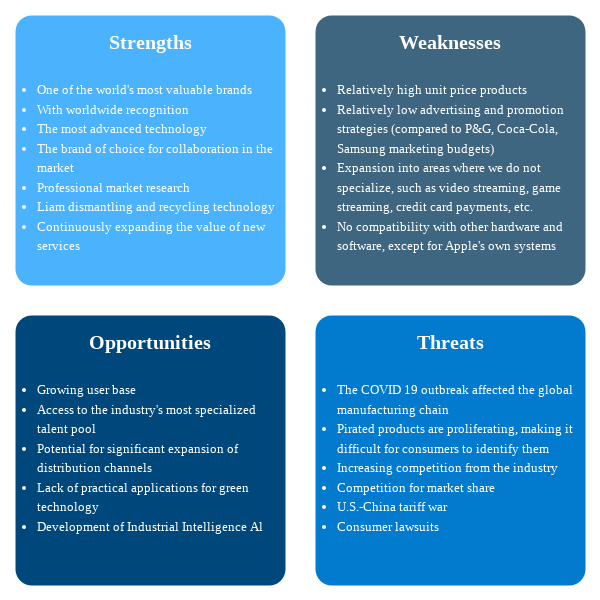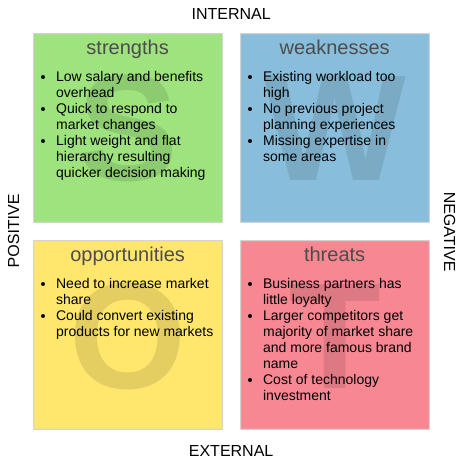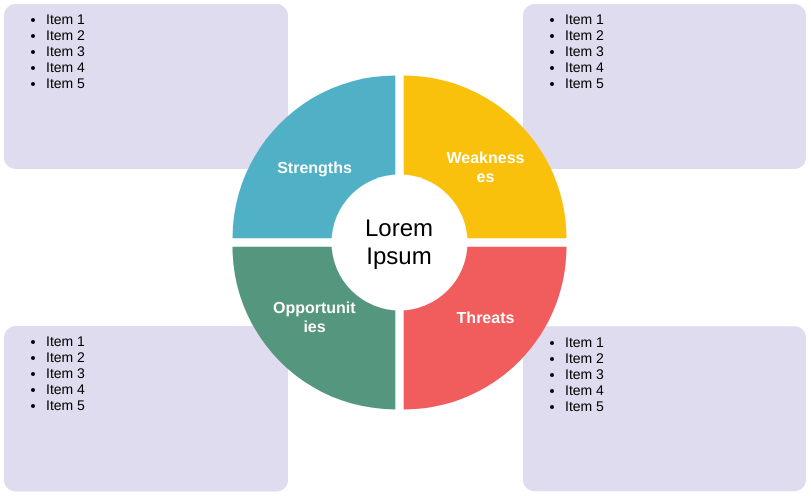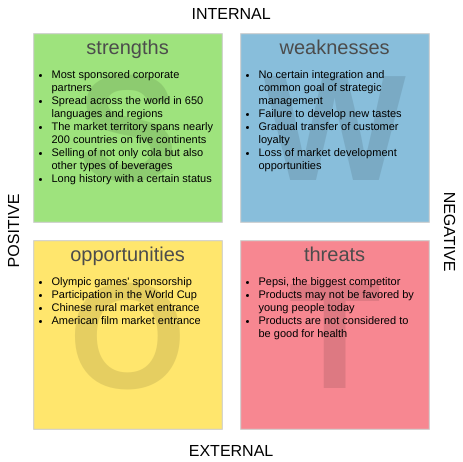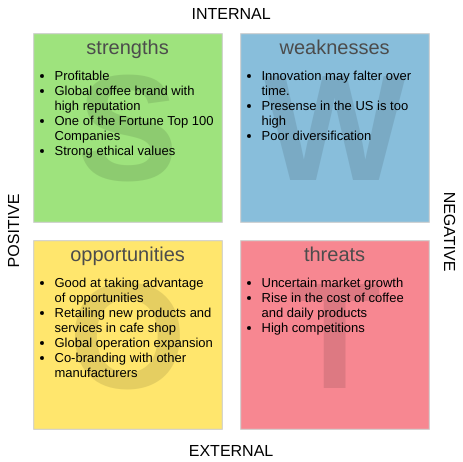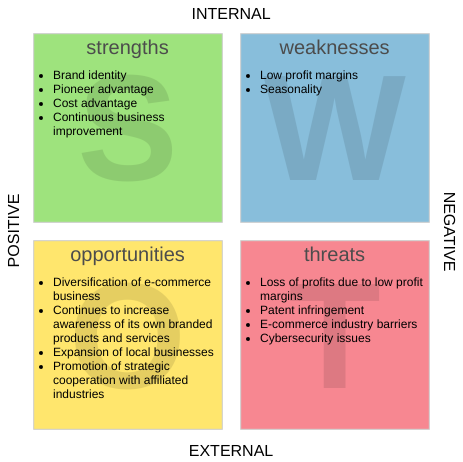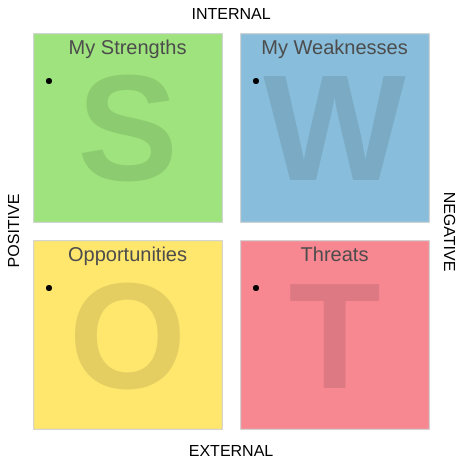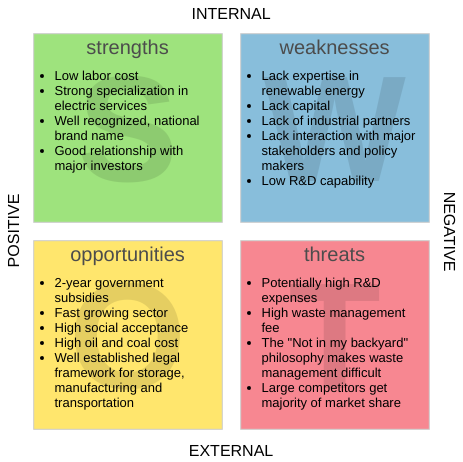What is the SWOT analysis method?
The SWOT anlysis is a situational analysis method based on the analysis of internal and external environment under competitive conditions. It is also used as a powerful tool for businesses to conduct market analysis in the context of corporate strategy formulation and competitor analysis.
SWOT stands for Strengths, Weaknesses, Opportunities and Threats and is a strategic analysis tool that helps you analyze the internal and external factors that can affect your organization, project or business venture. SWOT analysis, also known as SWOT matrix, arranges the identified strengths, weaknesses, opportunities and threats in an easy to understand 4 boxes.
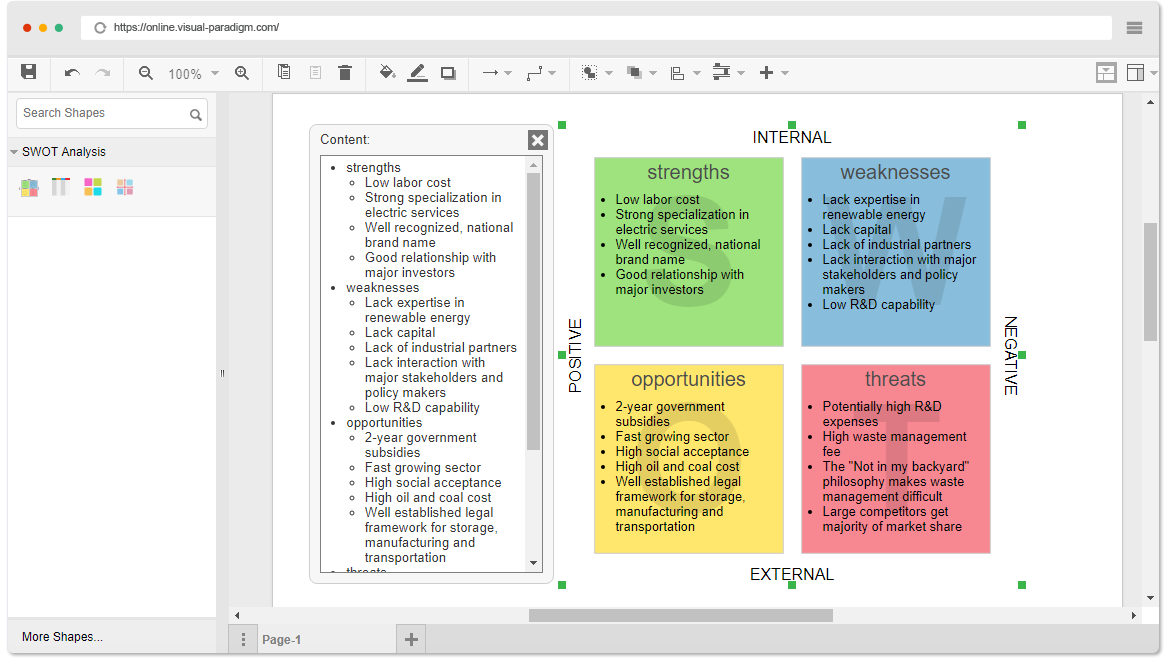
Internal vs External Factors
SWOT mainly consists of two cross-axes, “External, Internal” and “Positive, Negative”, which can be derived from strengths, weaknesses, opportunities and threats (as shown in the figure above), and is a very common and easy way to analyze the current situation of a company, product or individual, and can also be used as a means to solve problems.
Internal factors: Strength + Weakness
The internal factors in SWOT analysis include strengths and weaknesses, so why are strengths and weaknesses classified as internal factors? Let’s go on to see.
Strength
Strength is what key resources and technologies you possess, or what you are best at and most suitable to do. Strength blocks can also represent your own or your company’s own expertise or better than others. For example, a wide network of people, a highly competitive product, a strong brand, a loyal customer base, a unique technology, etc.
Thinking about strengths.
- What can the company do that no one else can do?
- What products or marketing strategies have been successful?
- What areas the company is familiar with
- The resources the company has
Weaknesses
Weaknesses are what you are least good at and least suited to do. Weaknesses can also reflect a company’s weaknesses and potential shortcomings. For example, lack of brand awareness, low market share, high debt level, lack of capital or lack of corporate culture, etc.
Think about the following areas of weakness.
- Areas in which the company does not excel
- Lack of resources and technology
- Are there obstacles to the company’s internal operations?
- Strength and Weakness are categorized as internal factors because both factors are mainly related to the company’s own conditions.
External factors: Opportunity + Threat
The external factors in the SWOT analysis include opportunities and threats, so why are opportunities and threats classified as external factors? Let’s go on to see.
Opportunity
Opportunity is whether you or your competitors can find new niche markets for your products, technologies, and services. Is it possible to develop new competitive products or services? Opportunity can be a company’s future advantage and is usually related to the economic environment and government decisions. For example, tariff reductions, increased consumer demand, etc.
Thinking about the direction of Opportunity.
- Services or goods that the company can develop in the future
- Increased demand for the company’s goods
- Possible benefits of future market changes
- Positive effects of changes in government regulations
Threat
Is there a threat that your products, technologies, or services will be replaced? Or is the market gradually going downhill? Threats are negative factors that are detrimental to a company’s growth. The common ones are the increase of raw material cost, the shortage of labor supply, the increase of competitors or the introduction of highly competitive products by competitors.
Threat thinking direction.
- How will competitors react?
- Are there potential competitors?
- Possible threats from future market changes
- Are the product supplier relationships strong?
- These two dimensions are often referred to as external factors, mainly because the factors that affect them are basically related to changes in the external environment.
What are the steps of SWOT analysis?
Generally speaking, there are four steps.
- Analyze the environmental factors – The analysis of various environmental factors, internal, external, potential and future situation and etc., the analysis should be comprehensive and in-depth, and should be done from various perspectives.
- Construct a SWOT matrix – Identify your strengths, weaknesses, opportunities and threats, and construct a SWOT matrix to include these elements. Of course, you can also do a SW analysis first, then an OT analysis, and finally integrate these to form a SWOT matrix.
- Develop an action plan – After completing the analysis of environmental factors and the construction of the SWOT matrix, you can make a corresponding action plan. The basic idea of the plan is to:
- Take advantage of the strengths,
- Overcome the weaknesses,
- Exploit the opportunities and
- Solve the threats.
- Consider the past, base on the present and look at the future – Identify the shortcomings of past behavior, compare them with the present, and think about how to develop them in the future.
Using an integrated approach of systems analysis, these arrangements are matched to the various environmental factors considered and combined to propose a range of alternative strategies for future development.
Recommended Online SWOT Tool
VP Online features a web-based SWOT analysis software that makes it easy to quickly develop a SWOT analysis model by using an intuitive list-based data editor. You can focus on listing information in bullet points. visual Paradigm will automatically form a SWOT matrix based on the information you provide.
Internet Small Business Startup
SWOT Analysis Template (Hexagon)
This post is also available in Deutsch, Español, فارسی, Français, Bahasa Indonesia, 日本語, Polski, Portuguese, Ру́сский, Việt Nam, 简体中文 and 繁體中文.














